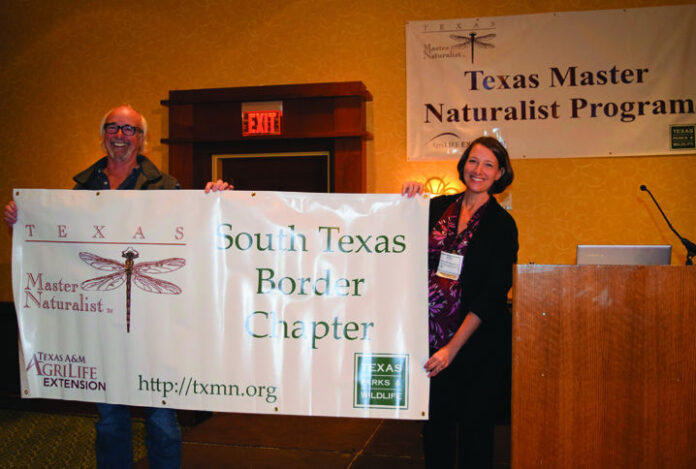BY ROD SANTA ANA III
MISSION — The call for volunteers to help nature in South Texas has been so successful that a second chapter of the Texas Master Naturalists has been created in the Rio Grande Valley, according to organizers.
The newcomer, the South Texas Border Chapter Texas Master Naturalists, is now accepting applications for their spring training, said Tony Reisinger, the Texas A&M AgriLife Extension Service agent for coastal and marine resources in Cameron County and a Texas Master Naturalist advisor.
“Volunteering to help Mother Nature is definitely the ‘in’ thing to do in South Texas these days,” Reisinger said. “People realize how important our environment is and that they can play a significant role in educating and assisting in nature-related projects.”
Texas Master Naturalists is a program supported by the Texas Parks and Wildlife Department and AgriLife Extension, he said. Among their many efforts, volunteers provide youth education programs and outreach and service to local nature centers and parks.
“Because volunteers have come forward in such overwhelming numbers, the statewide Master Naturalist Organization recently announced full chapter recognition for this second chapter, the South Texas Border Chapter, which serves Starr, Hidalgo and Cameron counties.”
Their spring training classes begin Jan. 12 with weekly Tuesday classes from 6-9 p.m. through April 4 at Bentsen Rio Grande Valley State Park, 2800 S. Bentsen Palm Drive in Mission.
The fee for classes and certification is $150. Background checks are required. Class size is limited to 25 students per chapter. Registration is available online at http://southtexasborder.wix.com/txmn.
Classes include field trips, hands-on volunteer opportunities and advanced training.
“The original chapter, the Rio Grande Valley Texas Master Naturalists, which serves Hidalgo, Cameron and Willacy counties, has reached its class size limit for this spring,” Reisinger said.
Javier de Leon, chapter advisor and park superintendent at Estero Llano Grande, said Texas Master Naturalists is made up of like-minded people who gather to help the environment.
“It’s interesting to think that Valley residents care so much about their environment that we now have two chapters with over 200 active members,” he said.
“It’s a small army of volunteers whose sole mission is to educate the public and help nature in any way possible, from installing butterfly gardens and helping with school field trips at local nature centers, to helping monitor red tide blooms at the coast and providing scientific data to a variety of researchers. Texas Master Naturalists do it all.”
To become certified as a Texas Master Naturalist, volunteers must complete the training program conducted by university faculty and experts from various local, state and national environmentally related agencies, de Leon said.
“Instruction is also provided by local professionals with knowledge in native vegetation and animal species,” he said. “Class topics include ecological regions, plant and wildlife classification, weather, geology, rangeland management, as well as presentations specifically focused on birds, butterflies and dragonflies.”
For more information on registration or the program, contact Rebecca Reyes, educational chair, at [email protected], or Marisa Oliva, chapter president, at [email protected].
Rod Santa Ana III is a Texas A&M AgriLife communications specialist.





